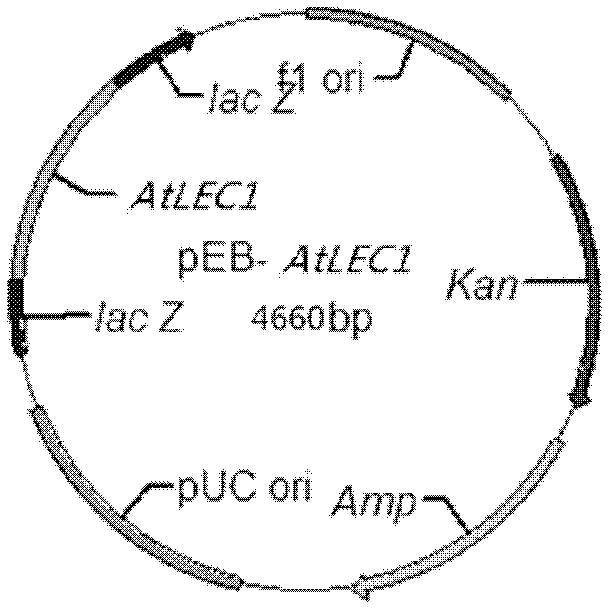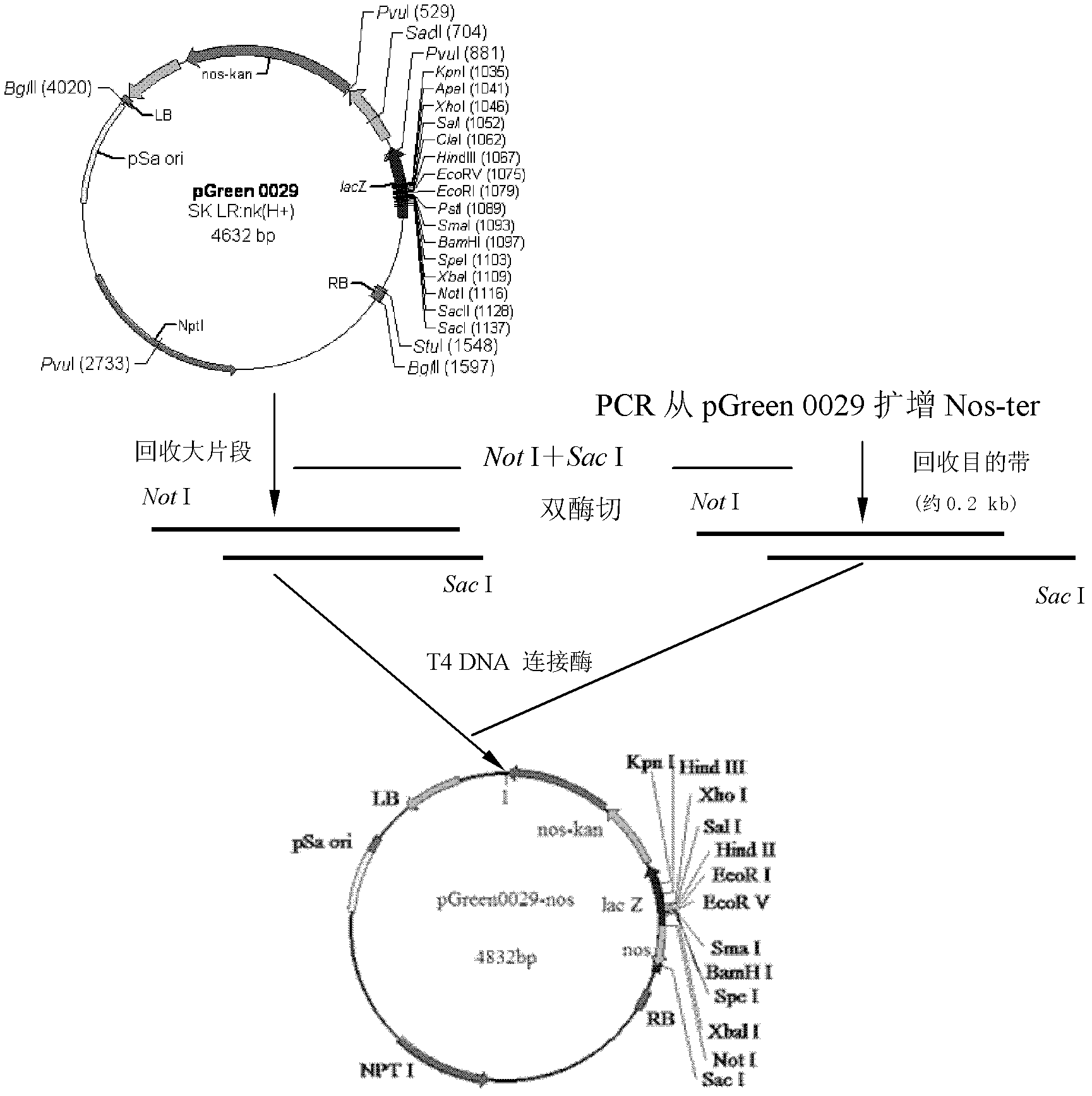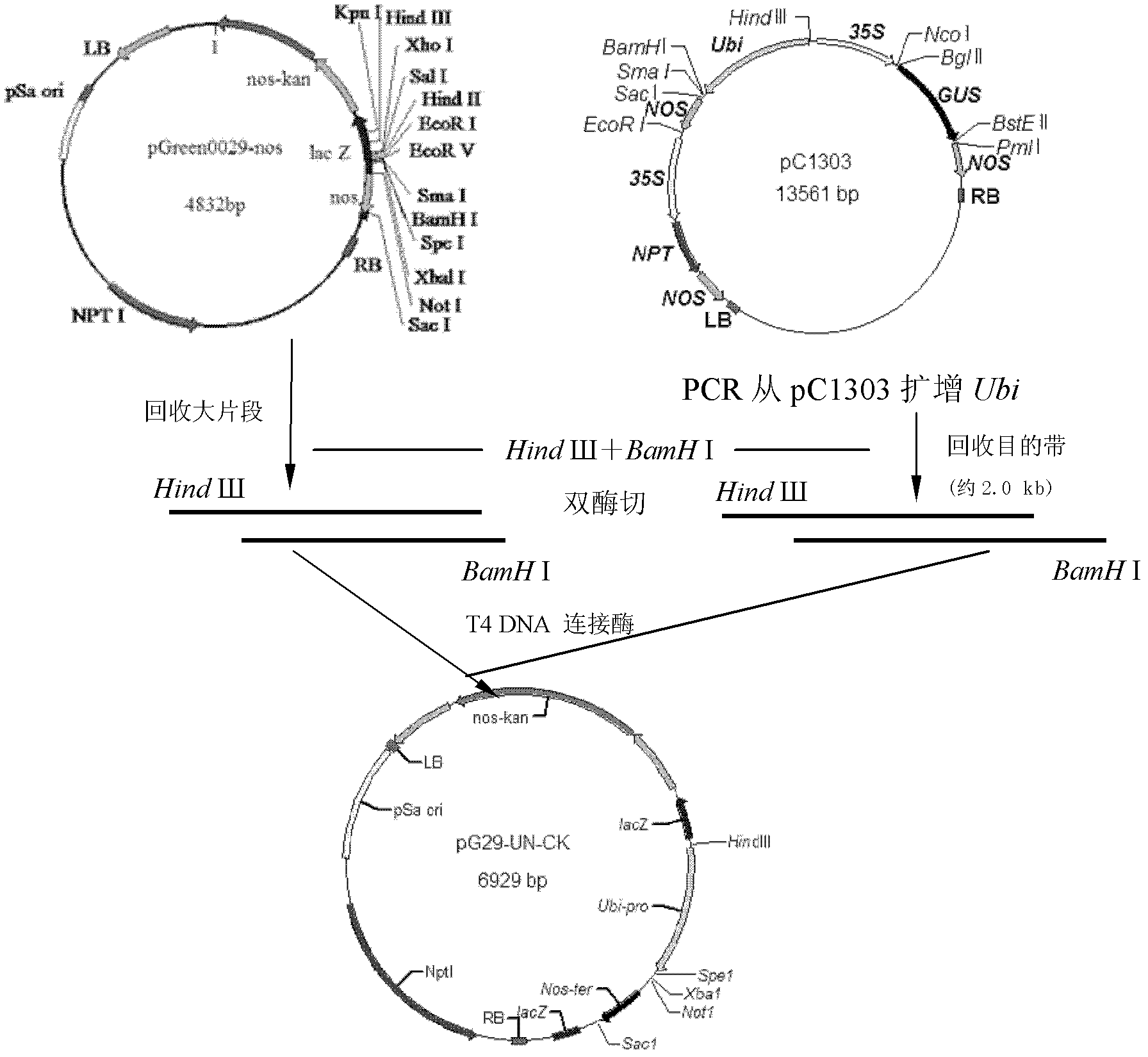Method for increasing the content of total oil, linoleic acid or α-linolenic acid in chlorella
A technology of chlorella and linoleic acid, applied in the direction of microorganism-based methods, biochemical equipment and methods, and the use of vectors to introduce foreign genetic materials, etc., can solve the problems of seed germination and leaf growth defects, which have not yet been retrieved
- Summary
- Abstract
- Description
- Claims
- Application Information
AI Technical Summary
Problems solved by technology
Method used
Image
Examples
Embodiment 1
[0037] Embodiment 1. Construction of AtLEC1 gene chlorella vector
[0038] 1. Synthesize the gene AtLEC1 according to the published sequence (NCBI Reference Sequence: NM 102046.4), and connect it into the T vector (purchased from Beijing Quanshijin Biotechnology Co., Ltd.) to form the vector pEB-AtLEC1 containing the gene AtLEC1, and sequence the gene AtLEC1 The sequence is SEQ ID NO: 1, and the expressed protein sequence is SEQ ID NO: 2. The plasmid vector diagram is shown in figure 1 .
[0039] 2. Using pGreen0029 (purchased from the John Innes Centre) as the base vector, construct a control vector pG29-UN-CK containing Ubiquitin promoter and nos terminator.
[0040] Use high-fidelity enzyme Pfu (purchased from Beijing Quanshijin Biotechnology Co., Ltd.) to amplify the nos terminator from the vector pGreen0029, with primers SEQ ID NO: 3 (forward primer) and SEQ ID NO: 4 (reverse primer) .
[0041] The PCR reaction system is as follows:
[0042]
[0043]
[0044] Th...
Embodiment 2
[0065] Example 2. Acquisition and detection of Chlorella transgenic AtLEC1
[0066] 1. Transformation of Chlorella
[0067] The chlorella used is Chlorella ellipsoidea (Chlorella ellipsoidea, from Institute of Hydrobiology, Chinese Academy of Sciences), refer to literature [2] Cultivate Chlorella to a suitable growth state, collect the algae cells by centrifugation and carry out hypertonic treatment, using the above literature [2] The same electric shock transformation condition carried out electric shock to Chlorella ellipsoides, and the Chlorella cells were coated with 30mg / L G418 solid medium containing 30mg / L G418 solid medium after electric shock (refer to literature [2] ), after about 4 to 6 weeks, detect the algae colonies grown on the plate.
[0068] 2. PCR detection of transgenic algal strains
[0069] Pick the single algal colony cells on the plate and inoculate them in 15mg / L G418 liquid medium (refer to literature [2] ) for 2 weeks (at a concentration of approx...
Embodiment 3
[0107] Example 3. Growth curve of Chlorella
[0108] In Example 2, the offspring LEC1-1 and LEC1-3 of the positive algal strains detected by molecular detection, and the control vector transformed algal strain CK, refer to the literature [2] Expand culture in 15mg / L G418 liquid medium, and wild algae (WT) expand culture in liquid medium without antibiotics at the same time. After culturing in a 50mL Erlenmeyer flask for 4-6 days, expand the culture in 150mL of new medium at an initial concentration of about 0.2g / L dry weight, sample and measure the biomass at the same time every day, and record for 8 consecutive days. The measurement results are shown in Table 1.
[0109] According to the measurement results, make the growth curves of transgenic algae and wild algae, see Figure 8 .
[0110] exist Figure 8 It can be found that Chlorella enters the plateau stage (growth reaches dynamic equilibrium) from the 6th day, and the algae biomass begins to decline on the 8th day. T...
PUM
 Login to View More
Login to View More Abstract
Description
Claims
Application Information
 Login to View More
Login to View More - R&D
- Intellectual Property
- Life Sciences
- Materials
- Tech Scout
- Unparalleled Data Quality
- Higher Quality Content
- 60% Fewer Hallucinations
Browse by: Latest US Patents, China's latest patents, Technical Efficacy Thesaurus, Application Domain, Technology Topic, Popular Technical Reports.
© 2025 PatSnap. All rights reserved.Legal|Privacy policy|Modern Slavery Act Transparency Statement|Sitemap|About US| Contact US: help@patsnap.com



